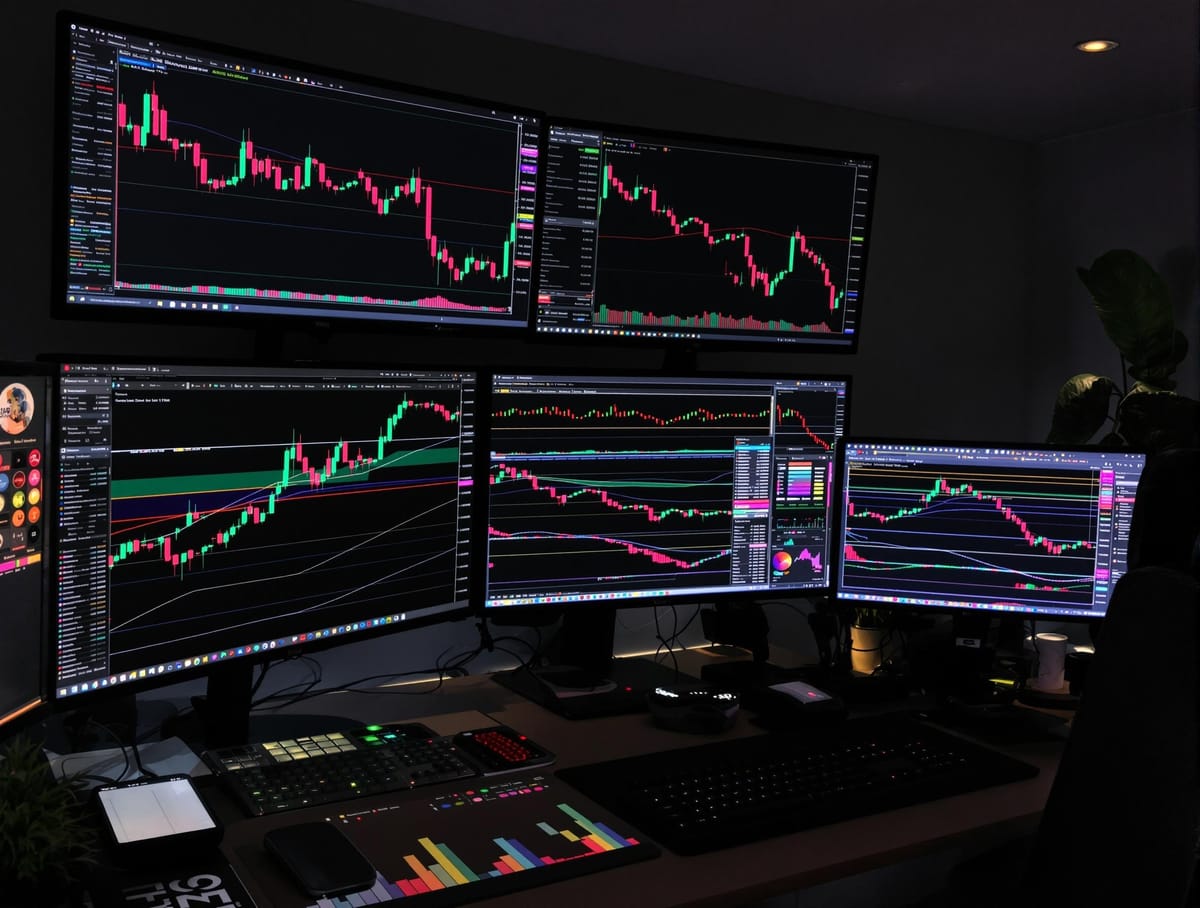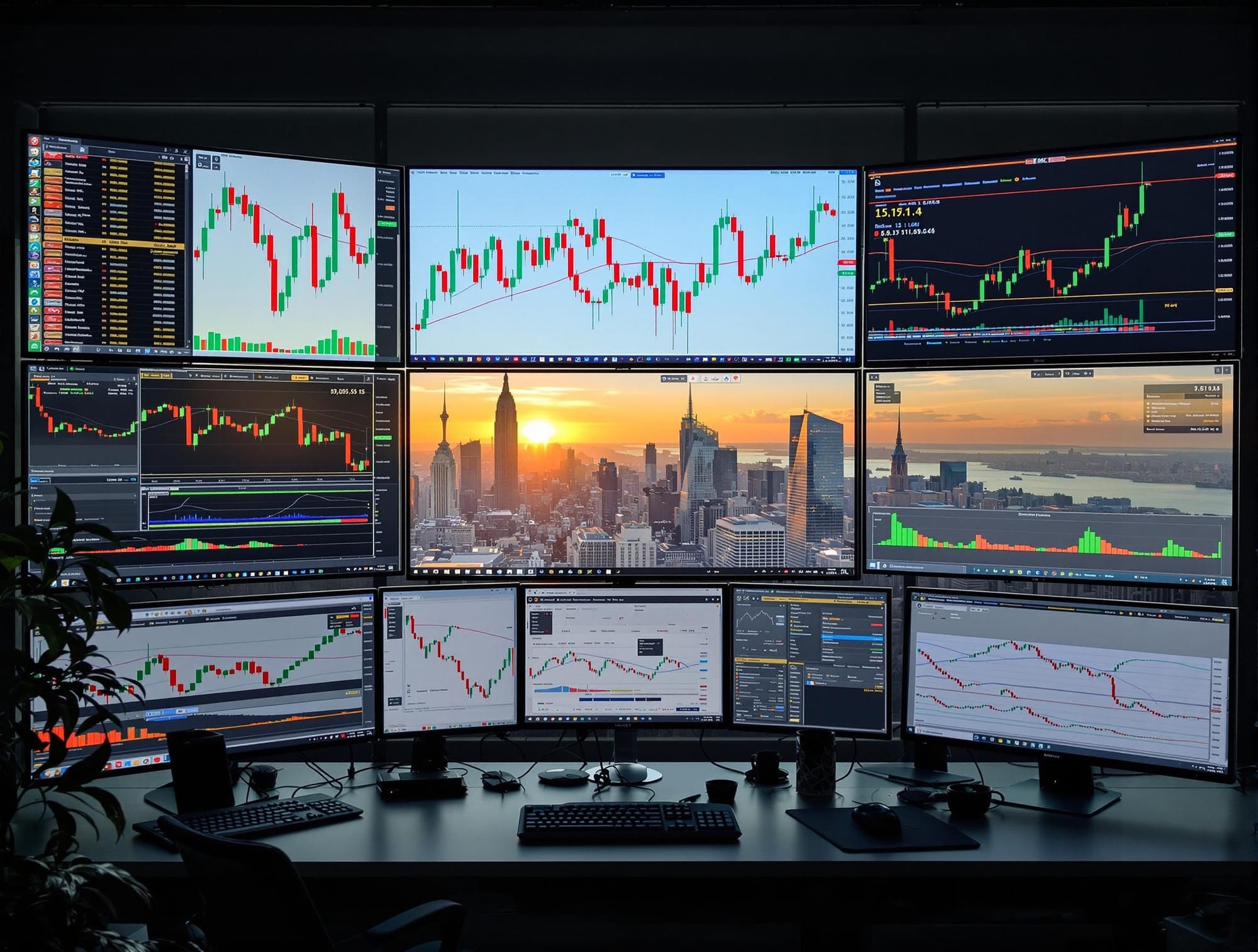Best Time to Trade MES Futures for Success

What Are Micro E-mini S&P 500 Futures (MES)?
Micro E-mini S&P 500 futures, often referred to as MES, are a popular choice for traders seeking access to the S&P 500 at a lower cost. One MES contract is one-tenth the size of a standard E-mini S&P 500 contract, making micro e mini futures perfect for beginners or smaller accounts. These micro futures contracts let traders gain exposure to the S&P 500 index with less risk. You might wonder, how much is a micro? MES contracts are designed to make index trading more accessible and flexible for retail traders.
How Much Is One MES Contract and What’s the MES Tick Value?
Understanding contract size and tick value is essential for those interested in futures market trading hours. One MES contract measures five times the S&P 500 index price. The MES tick value is $1.25 per tick, with each tick representing 0.25 index points. Knowing how much is one MES can help you plan position sizes and manage risk. Think about how a smaller tick size could let you scale in and out of positions more precisely. How might this flexibility benefit your trading style?
Why Your Timing of Trading Matters
The best time to trade MES futures doesn’t just depend on how much capital you have—it’s also about market movement. Price activity and liquidity vary dramatically over the session, influencing your entry and exit points. People sometimes overlook that futures market trading hours directly affect trade success. Have you ever noticed how certain times of day are more active and result in faster price moves? Timing can make the difference between a winning and losing trade.
Market Timing and Futures Exchange Hours
Being aware of futures exchange hours gives you a real edge. The main session for ES futures trading hours runs from Sunday evening through Friday evening, with pauses for maintenance. These futures market trading hours directly impact trading volume and spreads on minis and micros on ES. Using a trading schedule that aligns with high activity periods means you’re less likely to experience wide spreads or poor fills. What adjustments could you make if you knew the best hours for your strategy?
Volume and Volatility in MES Futures Trading
Volume and volatility patterns change throughout the day in MES trading. Micro futures attract the most activity during U.S. stock market hours, peaking in the morning and around key economic releases. More volatility can mean bigger profit potential—but also more risk. If low volume leaves you stuck in a position, your profits could slip away. How do you balance excitement and risk when trading during high-volume periods?
How to Trade S&P 500 Efficiently With MES
Learning how to trade S&P 5 efficiently means following price action, understanding when to enter, and knowing the best time to trade futures. Use tools like volume profiles, moving averages, and economic calendars to spot ideal opportunities. Micro E-mini S&P 500 contracts offer flexibility to test strategies without oversized exposure. Try starting with smaller sizes, especially around volatile times. What methods might you use to recognize the best entry during active ES futures trading hours?

Best Time to Trade MES Futures
Identifying the best time to trade MES futures can drastically improve your results. Active sessions offer tighter spreads and higher liquidity—key factors for quick entries and exits. Many traders find mornings, just after the U.S. market opens, bring robust price action. Have you tracked your own trading to see which time periods favor your strategy the most?
Morning Volatility
Morning volatility, especially during the first two hours after the U.S. futures market opens, can offer daily opportunities. This is when traders react to overnight news, pre-market data, and economic reports. Such activity suits those who like fast moves and short-term trades in minis and micros on ES. Keeping an eye on high-probability levels can help catch sharp price swings. What’s your plan for handling spikes in volatility during these active hours?
When to Close Trades on ES
Knowing what time you have to close trades on ES is essential to avoid unwanted overnight risk. Many experts suggest closing positions before the futures market trading hours thin out or the end-of-day session. As ES futures trading hours wind down, spreads often widen and price moves slow down. Are you watching the clock to minimize last-minute surprises? Consider setting regular calendar reminders as part of your risk management.
Afternoon Power Hour
The last trading hour—known as the “power hour”—also attracts increased volume as traders adjust positions before the close. This window often sees reversals or surges as new information surfaces and traders square up. If you trade micros on ES, this can be an excellent opportunity for short-term moves. Try monitoring how volume and price react near the session close for cues on potential trades. Could identifying routine patterns here enhance your end-of-day results?
Avoiding the Midday Slump
Volume usually drops off around midday, leading to the so-called “lunch lull.” Thin trading during these hours can mean wider spreads and choppy, directionless moves. If you’re seeking the best time to trade MES futures, consider taking a break during this period to avoid unnecessary risk. Are you wasting time and capital trying to force trades when the market is asleep? Review trading stats to see if midday trades are working for you.
Best Time to Trade MES Futures on Sundays
Many wonder, when do futures open on Sunday, and is Sunday trading worth it? The CME opens MES contracts at 6:00 PM Eastern on Sunday evenings, kicking off a new week. Trading can be thin right after the open, with spreads occasionally wider. Still, some traders look for “gap plays” as the market reacts to weekend news. Are you comfortable trading when market participation is lower, or do you wait for volume to build?
Economic News Release Timing
Major economic news—like jobs data or inflation reports—can drive spikes in volatility during futures exchange hours. These moments often provide some of the best timeframes for futures trading, but they’re not for the faint of heart. If you’re planning trades around news, double-check the economic calendar and prepare for rapid moves. Some traders stand aside during these periods, while others focus exclusively on them. How might news-driven volatility change your approach to micro E mini futures?
When Does the Futures Market Open?
The start of trading can significantly impact your results. For MES and other contracts, knowing exactly when does the futures market open ensures you don’t miss early action. CME Group opens S&P 500 futures—including micro e mini futures—each weekday at 6:00 PM Eastern, except Friday and Saturday evenings. Keeping track of your local time is key for punctual trade planning. What new opportunities could you capture by planning ahead for each market open?
When Do Futures Open on Sunday?
Futures trading resumes each week on Sunday at 6:00 PM Eastern. This is the very first session of the trading week for MES and other e-micro futures. While volume starts low, it can quickly pick up as Asian and European traders join. Some traders use Sunday evenings to place trades based on global news that broke over the weekend. Are you ready to react when the market reopens after the break?
What Time Does the Futures Market Close?
Understanding what time does the futures market close helps you avoid late-session risk and manage positions effectively. CME Group closes trading each day at 5:00 PM Eastern for a brief maintenance window, except on Friday, when the market remains closed until Sunday evening. This pattern applies to MES, micro futures, and minis and micros on ES. Are you adjusting your strategy or stops as the close approaches to avoid overnight exposure?

Swing Trading vs Day Trading MES Futures
The best timeframe for futures trading depends on your style. Day trading involves entering and exiting within a single session, while swing trading means holding positions for several days. Each approach takes advantage of different futures market trading hours and patterns. Which style matches your risk tolerance and trading goals more closely? That is something you need to ask yourself when trading MES or any product in the futures markets.
Best Time to Swing Trade MES Futures
Swing traders focus on broader trends and usually avoid choppy intraday moves. The best time to swing trade MES futures is during periods of increased macroeconomic activity or market news. These traders often place trades near the close or open to capture multi-hour or multi-day momentum. Do you prefer catching longer moves rather than trading every wiggle? Keep an eye on key economic events that can drive trends.
Best Time to Day Trade MES Futures
Day traders thrive on high volatility and tight spreads. The best time to trade MES futures within the day is during the first two hours after the market opens and the last hour before the close. Many pros avoid the midday lull, instead concentrating their trades during peak activity.
Best Time to Trade MCL Futures vs MGS Futures
MCL (Micro Crude Oil) and MGS (Micro Gold) futures both offer micro-sized contracts, but their best activity times differ from MES. MCL is most active during regular U.S. energy market hours, while MGS peaks during global gold trading hours. Comparing the best time to trade MCL futures, MGS futures, and MES can help you diversify strategies.
Conclusion: Best Time to Trade MES Futures for Success
Trading MES futures can fit almost any account size or schedule if you match your strategy with the right market hours. Volume, volatility, and futures exchange hours shape when MES offers the best opportunities. Staying aware of contract specifics—like MES tick value and what time you have to close trades on ES—helps you avoid costly mistakes. Being patient and selective during the best timeframes can really boost your trading consistency.
FAQs About Trading MES Futures
What is the best time to trade MES futures for beginners?
The best time to trade MES futures for beginners is typically during the first two hours after the U.S. stock market opens, starting at 9:30 AM Eastern. This period features the highest trading volume and the most predictable price movements, making it ideal for developing skills and practicing timing. Higher liquidity during this window also means tighter spreads, which helps manage costs for those new to micro futures. It’s a great time to focus on learning how price reacts to news and key technical levels.
What time does the MES market open and close?
MES futures open for trading at 6:00 PM Eastern from Sunday through Thursday, and they trade nearly 23 hours a day until 5:00 PM Eastern the following day. The market pauses daily from 5:00 PM to 6:00 PM Eastern for a maintenance break. On Fridays, the market closes at 5:00 PM and remains closed until Sunday evening. Knowing these futures exchange hours helps you plan your trades and avoid being caught by session breaks.
Are MES futures active during overnight sessions?
MES futures are available for trading nearly 24 hours a day, including overnight sessions. However, volume and volatility usually decrease during overnight hours, especially outside of European or Asian market opens. Thinner trading can mean wider spreads and less predictable moves, so overnight sessions may present more risk for new traders. Do you monitor global news overnight, or do you prefer to focus your trades during U.S. market hours?
How do MES futures compare to other micro futures?
MES futures give you access to the S&P 500 index at a smaller size and lower capital requirement compared to other e-micro futures such as MCL (Micro Crude Oil) or MGS (Micro Gold). MES is highly liquid, tracks a major stock index, and has active price action thanks to the popularity of the S&P 500. Other micro futures might focus on commodities or currencies, offering different trading profiles and best timeframes for futures trading.
What are the cheapest mini futures to trade?
The MES (Micro E-mini S&P 500), MNC (Micro E-mini Nasdaq), and MYM (Micro E-mini Dow) are considered some of the cheapest mini futures to trade, based on lower margin requirements and tick values. With as little as $50 per contract in day trading margin at some brokers, MES futures unlock the ability to trade a major index with limited risk. Always consider tick value and commission structure as well, as these micro contracts are designed for cost-efficiency.
FAQs About Funded Futures Network
Does Funded Futures Network allow MES futures trading?
Yes, Funded Futures Network allows trading of MES futures as part of its funded account offerings. You can trade micro e mini futures, minis and micros on ES, and other popular contracts depending on your account size and qualifications. This makes it easier for traders with smaller capital to pursue funded trading opportunities.
How do I qualify for a funded MES futures account?
To qualify for a funded MES futures account with Funded Futures Network, you typically need to pass a trading evaluation. This evaluation tests your consistency, risk management, and ability to follow predefined rules using micro futures. Meeting profit targets and avoiding maximum drawdowns are common requirements.
What platforms can I use with Funded Futures Network?
Funded Futures Network supports several popular futures trading platforms, including Quantower (FundX), EdgeproX, and others compatible with MES and related contracts. This flexibility lets traders choose tools that fit their style and preferences for micro futures. Do you have a platform that you’re already comfortable with, or are you open to exploring new trading software?
Does Funded Futures offer training on how to trade S&P 500 futures?
Funded Futures Network community provides educational resources and training materials for traders looking to learn how to trade S&P 5 and other e-micro futures. See the streamers that are in the live discord every morning to find other communities that can help you on your trading journey. Content covers core concepts like technical analysis, risk management, and the best time to trade futures.
Is there a minimum account size for MES futures at Funded Futures Network?
Funded Futures Network generally allows qualified traders to start with a minimum account size aligned with MES margin requirements, which is much lower than standard futures. This makes trading accessible even if you’re starting small. Read their account policies for specifics, as requirements may vary depending on your trading plan and performance. If you have questions about getting funded at Funded Futures Network, reach out to their support using the chat on their website or contact them via email.



